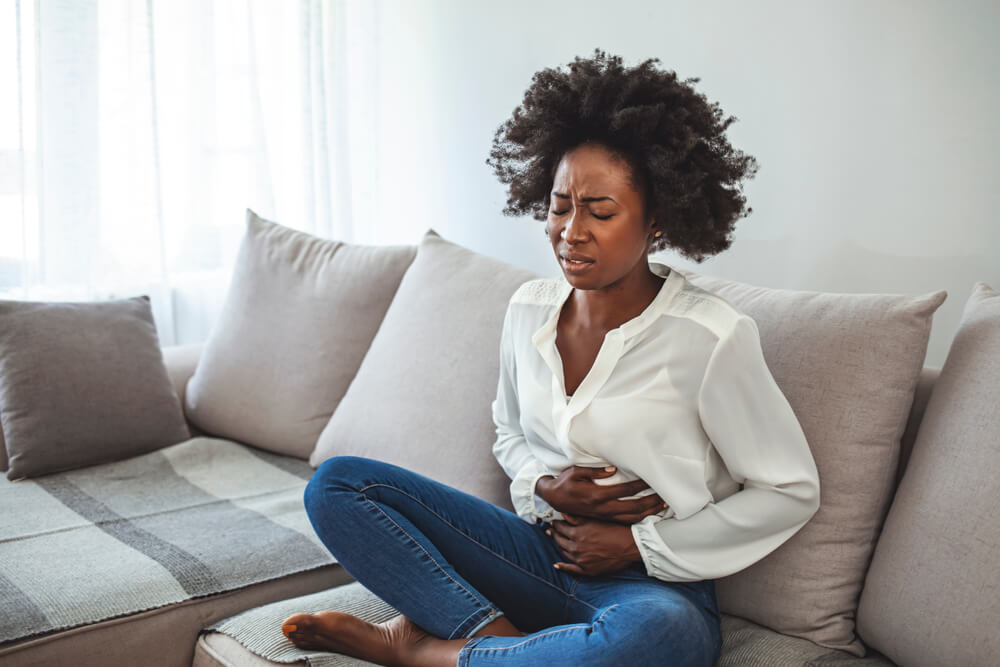In order to write more about the stages of endometriosis and how the condition develops, it is essential to deliberate in more detail the causes, symptoms, and general information about a condition affecting one in ten women.
Perceived as a prevalent gynecological condition, endometriosis is a painful disorder where the tissue which grows on the uterine lining starts growing in other organs such as the ovaries or the fallopian tubes. Endometriosis brings immensely painful menstrual cycles, and it is usually a significant factor when it comes to infertility in women.
The leading cause of this condition is still unknown, and many people connect it only to genetics and the way in which the lining tissue sticks to organs instead of leaving the body through the menstrual period. The symptoms include:
- Pain in the lower stomach
- Immense period pain
- Pain during sexual intercourse
- Pain during urination
- Constipation, diarrhea, or blood in the urine
- Scarring and endometrial cysts in the pelvic region
- Infertility
To be able to get the diagnosis of endometriosis and pick the most adequate approach to treat the condition, it is crucial to get acquainted with the services of endometriosis ultrasound and treatments. If you are looking for an endometriosis specialist in Pembroke Pines, FL, it is essential to research all your options.
ACE OBGYN is most certainly one of the best places to consider when it comes to endometriosis and its successful diagnosis and treatment.
Endometriosis Stages

Experts often state that putting a condition into a classification or stage makes the research and development of potential cures and solutions much easier and more practical.
Although endometriosis comes in various forms, and every detail on the development of the condition, organs affected, and other circumstances is of great importance, experts have managed to create a four-stage classification of the disease, which is commonly used.
To determine the stages of endometriosis in a patient, doctors use a procedure called laparoscopy, where an abdominal incision is made. A thin tube with a light is used to examine the reproductive orangs. Using a points system, the medical professionals assign points to certain conditions they find during the procedure and determine what stage the endometriosis is in. The stages and points were created as follows:
- 15 or less – minimal or mild stage (Stages I and II)
- 16 to 40 points – moderate stage (Stage III)
- 40 or more – severe stage (Stage IV)
It is important to emphasize that the pain and difficulty levels of endometriosis do not correspond to the points system created, meaning that women can feel extreme pain regardless of their diagnosis being stage one or stage four endometriosis.
Endometriosis stages also have different levels of manifestations of the condition, and for this reason, apart from the points system, medical professionals also use descriptive classification. Below you can find both the manifestations but also the localization of each stage.
- Stage 1 of the condition is referred to as peritoneal endometriosis or minimal, meaning that the implants are tiny, not numerous, and are more or less superficial. The location of the tissue is in the peritoneum, i.e., the membrane lining of the abdomen. As mentioned, this does not correlate with the amount of pain and discomfort women feel in every stage.
- Stage 2 is also called ovarian endometriomas or the mild stage, and the number of implants might be bigger and deeper. The condition has already reached the ovaries in this stage, and ovarian cysts are created. The danger of ovarian cysts is that they have the potential to burst and carry the condition into the pelvic cavity.
- Stage 3 endometriosis or deep infiltrating endometriosis is considered an advanced stage of the condition. It affects organs such as the ovaries, uterus, and rectum, and it can have a very negative effect on the pelvic organs in general.
There are many deep implants and endometrial cysts in this stage on one or both ovaries. The endometrial cyst is formed when the tissue is growing on an ovary, and during the menstrual cycle, some blood is stored within the cysts, making them brown. Due to this, people sometimes refer to them as “chocolate cysts.”
In stage three, endometriosis doctors also point to bands of tissue formed, binding organs together. These bands are called adhesions, presenting the scar tissue created when the body fights inflammation from endometriosis. These adhesions are suspected to be one of the causes of pains and nausea because they bind organs together when this should not be the case.
- The severe stage of endometriosis, or the deep infiltrating endometriosis 2 (stage 4 endometriosis), is a stage in which there is a large number of deep implants, large cysts on one or both ovaries, and concentrated adhesions in the pelvic region. The localization of this stage includes the pelvic organs but also the areas surrounding them, such as the bowels, appendix, heart, and lungs.
Can You Heal from Endometriosis?

Unfortunately, many sources point out that there is no exact cure for endometriosis. Many different treatments serve as tools to ease symptoms so that your everyday life can continue as usual.
First, we need to get the diagnosis to get to the treatment phase. There are several ways this is done:
- Pelvic examination (used to identify cysts rather than tissue)
- Ultrasound (used to identify cysts rather than tissue)
- Magnetic resonance imaging (used to get detailed information on the location and size of the endometrial implants)
- Laparoscopy (used to get information about the location, extent, and size of the implants as well as extract the tissue for biopsy)
The treatments for this type of condition are very individualistic and can differ immensely from one person to another. The most common treatments involve medication or surgery depending on how severe the manifestations of the condition are and what you want to achieve.
Doctors most often advise their patients to try medication first, and if that fails, then to try surgery instead. Below you can find a list of some of the most typical treatments women use when attempting to treat endometriosis:
- Pain medication (anti-inflammatory drugs, ibuprofen, and alike)
- Hormone therapy (hormonal contraceptives, progestin therapy, inhibitors for reduction of estrogen levels in the body, blockers of ovarian hormones production)
- Surgery (used to remove implants from uterus and ovaries for a more successful pregnancy; laparoscopic and abdominal surgery)
- Hysterectomy and ovaries removal
- Fertility treatment (for persons having troubles conceiving)
We Want to Help!
We at ACE OBGYN take the diagnosis of endometriosis very seriously. Bringing women’s period pain at face value helped us successfully diagnose the condition in many women and offer adequate treatment and support.
We want to give you as much information as possible on the stages of endometriosis so you can be prepared and ready to invest in your reproductive health fully. We are here, so please contact us and take advantage of our immense experience and expertise on endometriosis.

